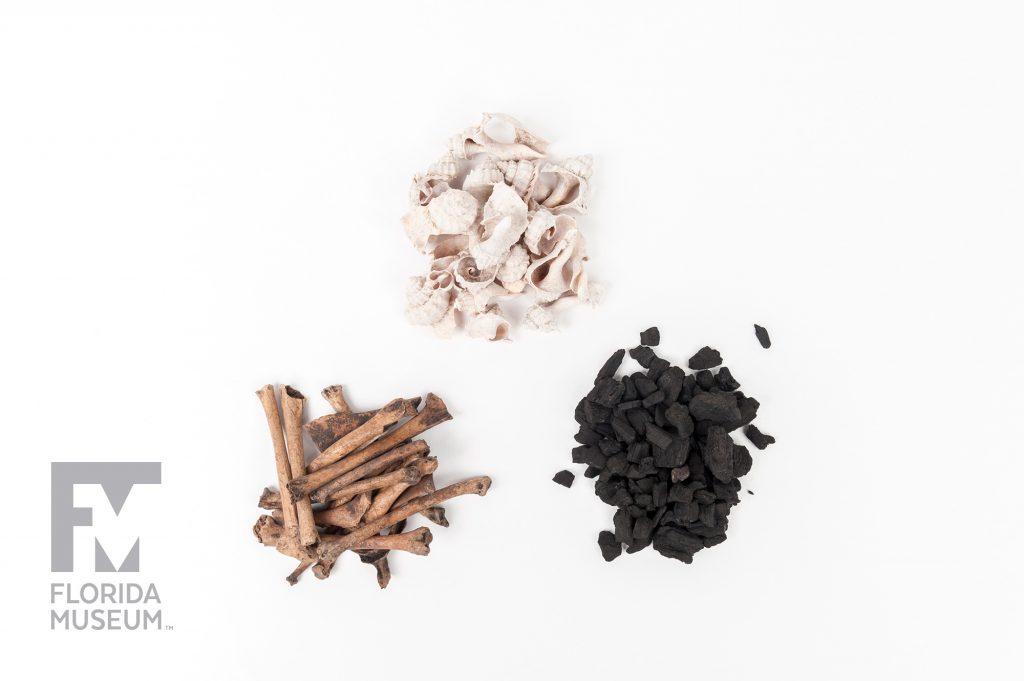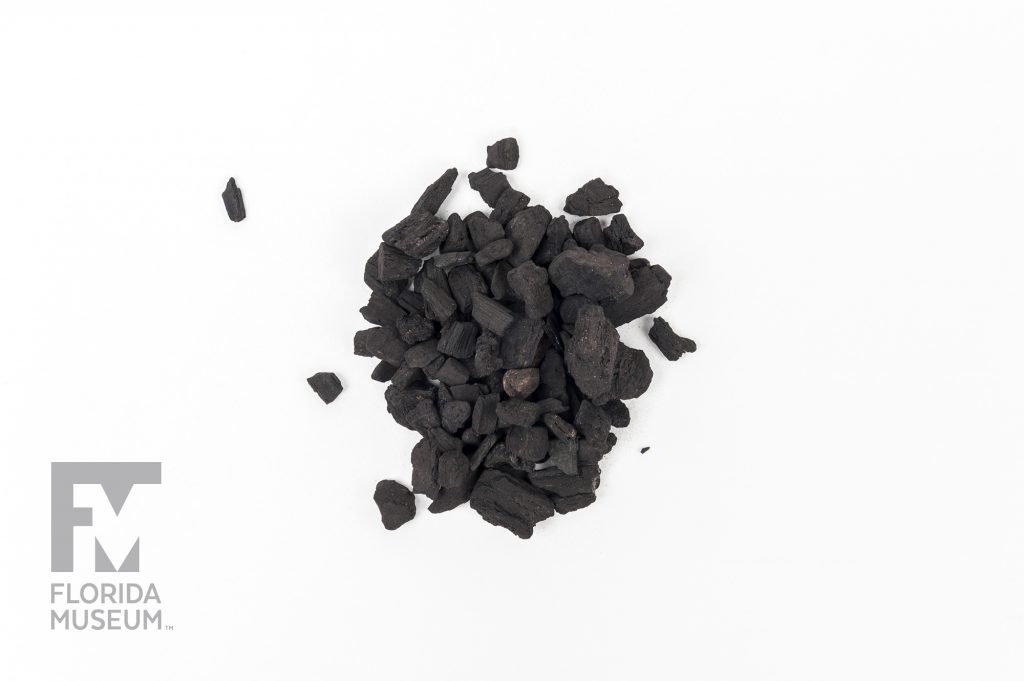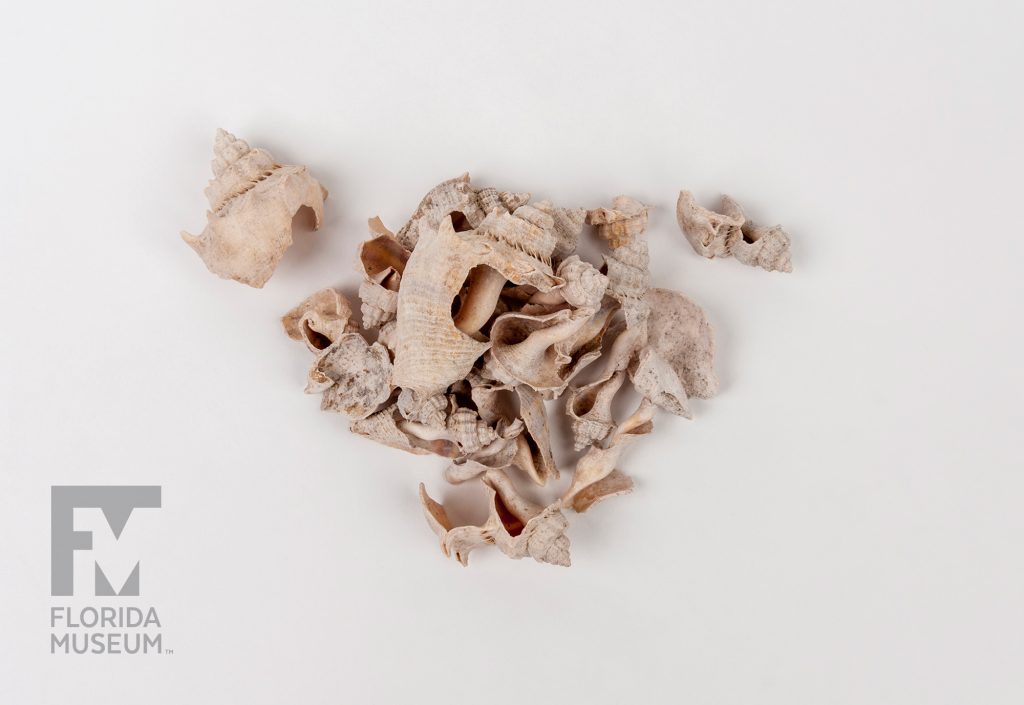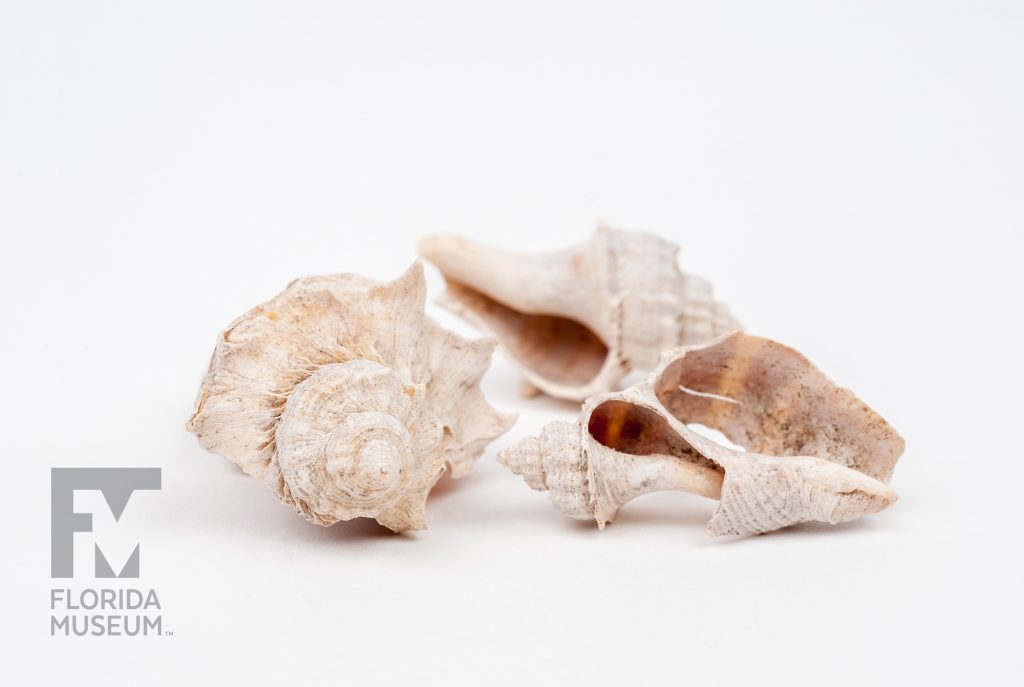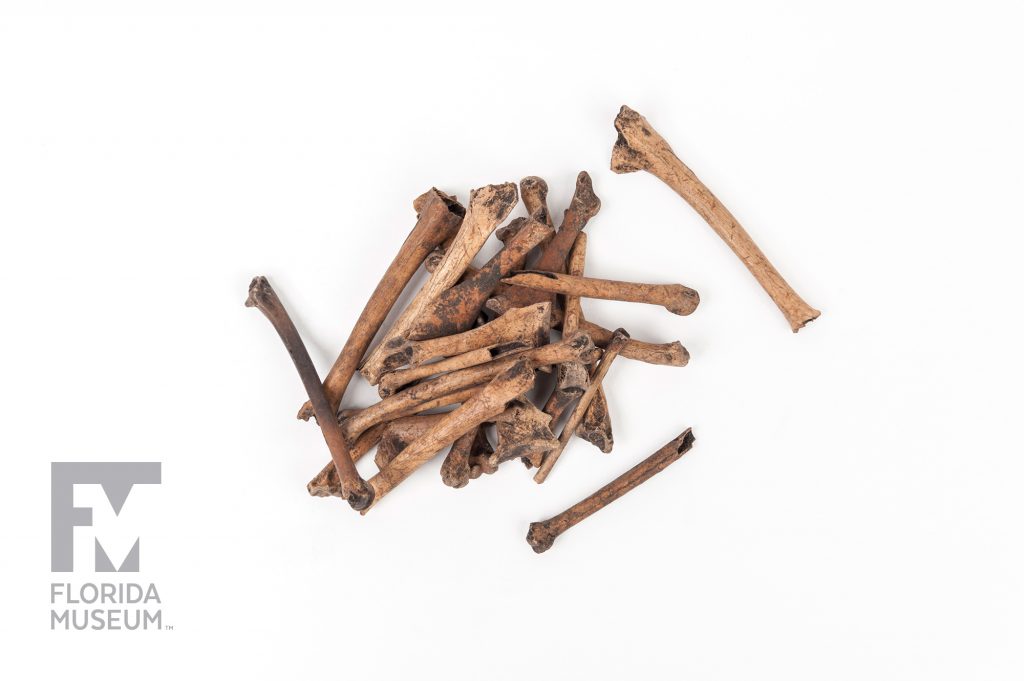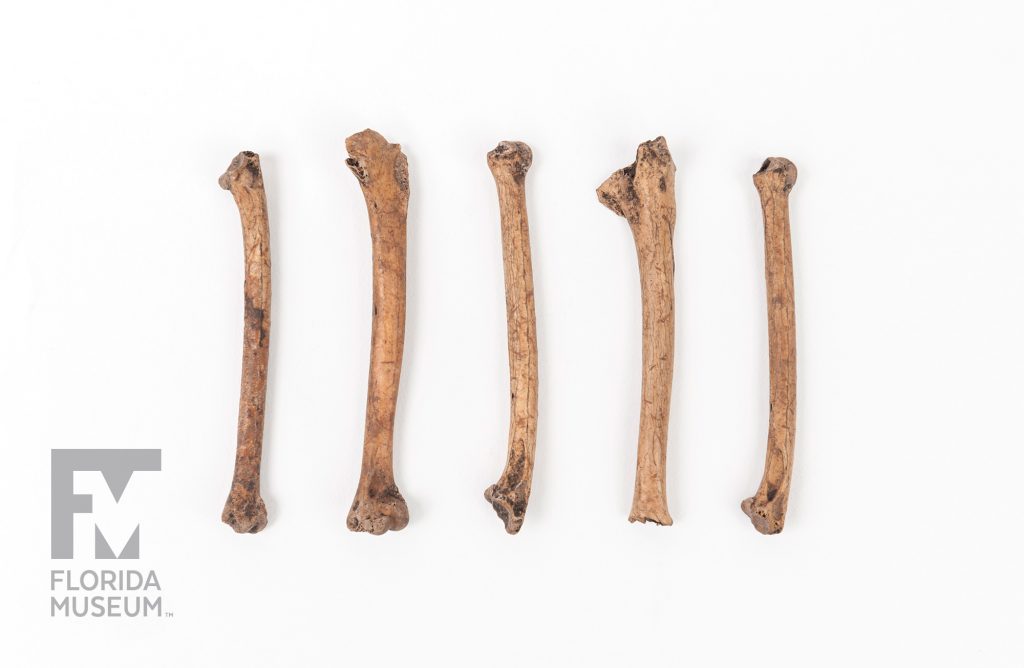Museum researchers determined cooler, drier temperatures and lower sea levels by studying the changes in remains at a Calusa archaeological site. Though small, the change in climate would have a tremendous impact on the Calusa, including the collapse of their fishery.
Summary
Animal Remains: Cold Period
From Lee Co., Florida
Lived ~AD 550–800
Crown Conch Shells (Melongena corona)
Charred Wood (Pinus sp.)
Ancient Duck Bones (Anatidae)
Collection
Story
So here we have some duck bones, some Crown Conch shells and some charred wood. So what can this tell us about a cold climate or a warm climate? In this case it is telling us a story about a cold climate at the Pineland site in Southwest Florida.
Migratory ducks will fly further south when it’s colder. So a duck that might have ordinarily stopped in south Georgia or north Florida might come further south because it’s really cold. So they end up nesting and roosting down in Southwest Florida. Of course the Indians take advantage of that sort of thing because they’re good food.
The Crown Conchs are available mainly because of degraded estuary conditions. This is caused by oysters which are now stressed because water levels are lower. The Crown Conchs, which are predators on the oysters, have an easier time getting into the shells because the oysters are weakened due to their partial exposure to the air. So the Calusa were eating a lot of these small Crown Conchs, but Crown Conchs don’t live on the oyster bars, they live in the sea grasses where they could be easily obtained. But they are there because the Crown Conchs are reproducing at a great rate because they are profiting at the expense of the oysters in the estuary.
The preferred fuel wood for the Calusa for building their fires, for cooking, smoking, whatever they were doing, keeping warm, was mangrove. Mangrove is a tree that grows close to the water level because it can tolerate the salt; other trees can’t compete. And so there are always mangroves at the edge of an estuary situation where the Calusa people lived. As sea level goes down the mangrove trees are no longer there — they are stressed and eventually they die. So without that source of wood the Calusa had to turn to pine which they got from the interior. Pine wood burns at a very high heat and so it was desirable particularly if it’s a cold time, but it was not their preferred fuel wood. The great thing about mangrove is that it coppices well — that means if you cut off branches of a mangrove tree it branches out; in a sense it is a renewable resource of firewood. So it was very difficult for the Calusa once the mangrove left the edge of the shoreline. Not only were there fewer fish but there was less amount of firewood available.
Bill Marquardt
Curator, South Florida Archaeology & Ethnography*
Director, Randell Research Center*
Florida Museum of Natural History
Exhibit
On display Sept. 23, 2017-Jan. 7, 2018, Rare, Beautiful & Fascinating: 100 Years @FloridaMuseum celebrated the Museum’s rich history. Each Museum collection was asked to contribute its most interesting items and share the stories that make them special. Though the physical exhibit is closed, this companion website remains online, providing an opportunity to experience the Florida Museum’s most treasured specimens.
Exhibit Area: Objects Tell Stories
Theme: Changing Climate
 Want to see more? Explore more than 300 breathtaking color photos of plants, animals, fossils and cultural heritage materials from the Florida Museum of Natural History’s collections in the award-winning book All Things Beautiful available from the University Press of Florida.
Want to see more? Explore more than 300 breathtaking color photos of plants, animals, fossils and cultural heritage materials from the Florida Museum of Natural History’s collections in the award-winning book All Things Beautiful available from the University Press of Florida.
*This title was accurate at the time the exhibit was on display in 2017. Please visit the collection website to verify current staff and student information.
